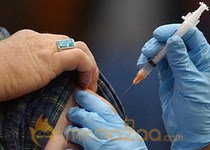Some outpatient facilities may have more lapses in infection control than you’d think: According to a new study in the Journal of the American Medical Association, about two-thirds of ambulatory surgical centers have at least one problem with infection control.
Ambulatory surgical centers are facilities that provide surgery to patients who don’t need to be hospitalized or stay overnight.
“It’s a disappointing number,” says lead study author Melissa Schaefer, M.D., of the Centers for Disease Control and Prevention. “Any time that there is a lapse, you are putting patients at risk.”
The researchers decided to launch an investigation into some of the facilities after a 2008 outbreak of hepatitis C in a Las Vegas ambulatory surgery center; as a result, 40,000 people were notified that they could be potentially at risk for the virus. The reason for the outbreak was due to unsafe injection practices, like the reuse of syringes, says Schaefer. The incident also resulted in the joint effort of the CDC and the state of Nevada to inspect all the ambulatory surgery centers in the state.
For this study, the authors inspected 68 centers from three other states and found that 19.4 percent had a lapse in adherence to hand hygiene or appropriate use of personal protective equipment (i.e., gloves), 28.4 percent had problems with injection practices or medication handling, and 46.3 percent didn’t handle their blood glucose monitoring equipment appropriately, among others.
The latter of these problems may be especially troubling. One particular device used to test blood glucose is called a single lancing penlet device, says Schaefer. It looks like a pen, and it is only designed to be used on one person. Nevertheless, 21 percent of the facilities that used the device used it on multiple people—an act that could cause hepatitis B.
“I can’t say how generalizable [the findings] are,” says Schaefer, “but having said that, I don’t think that the findings in these states or in these facilities are unique.”Bacteria
All the facilities had volunteered to participate in the study, says Schaefer. They were not selected because they were rumored to be problematic.
Some steps have already been taken to address the problem. Schaefer says that now, all ambulatory surgical centers have to have one infection control program. A statement from the Ambulatory Surgery Center Association can be found here.
Schaefer is hopeful that this study will cause other outpatient facilities, like physicians’ offices, to take a look at their own practices and be proactive about infection control; they shouldn’t simply wait around to be inspected by the CDC.
Because if they don’t, we might have a problem:
“If the findings by Schaefer et al are generalizable, then among the estimated more than 6 million patients who undergo procedures in ASCs annually in the United States, it is possible that several million patients could be at potential risk for [health-care associated infections] each year,” writes Philip S. Barie, M.D., in an accompanying editorial. “This risk is not acceptable and must be corrected immediately and definitively.











